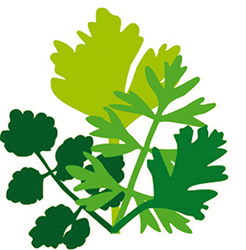Inhalt: Background
Many wild plant species that are related to cultivated plants grow in Germany. They contain genes that could become relevant for the improvement of crops via breeding in the future. Preserving biodiversity and its potential for use is an important social goal. That is why nature conservation and agriculture work together to conserve these genetic resources.
By signing the International Treaty on Plant Genetic Resources for Food and Agriculture and the Convention on Biological Diversity, Germany has committed itself to preserving wild species related to our cultivated plants in situ, i.e. at the place where they naturally grow. The Federal Ministry of Food and Agriculture (BMEL) has included this as a need for action in the National Programme for Plant Genetic Resources and is currently working on establishing such a network.
Since 2015, researchers from the Julius Kühn Institute, the University of Osnabrück and Humboldt University of Berlin have been investigating the genetic diversity of wild celery occurrences in Germany in the frame of the Project "Genetic Reserves for Wild Celery Species (Apium and Helosciadium) as Part of a Network of Genetic Reserves in Germany (GE-Sell)". The aim of the project was to use various wild celery species as model objects to demonstrate how the protection of wild plants for food and agriculture in their natural habitats can be improved by establishing an exemplary nationwide network of genetic reserves.
The intraspecific diversity of wild celery species was assessed and representative plant populations maximizing this diversity were selected. The coordination unit of the Wild Celery Network establishes genetic reserves for these occurrences. A network of genetic reserves, comprising at least 45 plant populations, is to ensure that the intraspecific diversity of the wild celery relatives is preserved.
